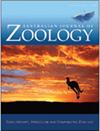新型微卫星和粪便DNA研究作为带状兔小袋鼠(Lagostrophus fasciatus)非侵入性种群监测工具
IF 1
4区 生物学
Q3 ZOOLOGY
引用次数: 1
摘要
摘要对小型或中型动物种群的监测项目通常使用活体捕获或照片监测诱捕方法来估计种群规模。带状兔沙袋鼠(Lagostrophus fasciatus)是一种小型大足类有袋动物,不容易进入陷阱或具有独特的个体特征,因此难以使用这些方法进行监测。从粪便中分离DNA以获得个体基因型是一种很有前途的监测技术,可能为该物种提供另一种方法。我们开发了新的物种特异性微卫星标记,并在该物种易位的两个地点进行了环境条件下粪便DNA降解的试验。通过微卫星标记的扩增失败率和基因分型错误率来评价粪球DNA的质量。在多个个体中比较不同处理和暴露时间的错误率。从所有样品中成功获得DNA,错误率随着暴露时间的延长而增加,在14-30天后达到峰值,具体取决于地点和处理。光照水平是影响降解率的最显著因素,但光照水平和光照时间对放大失效均有显著影响。分析从粪便颗粒中获得的DNA可能是一种实用的非侵入性方法,可以估算该物种的种群数量,值得进一步发展。本文章由计算机程序翻译,如有差异,请以英文原文为准。
Novel microsatellites and investigation of faecal DNA as a non-invasive population monitoring tool for the banded hare-wallaby (Lagostrophus fasciatus)
Abstract. Monitoring programs for populations of small or medium-sized animals often use live-capture or photo-monitoring trapping methods to estimate population size. The banded hare-wallaby (Lagostrophus fasciatus), a small macropodiform marsupial, does not readily enter traps or have individually unique distinguishing physical features and is consequently difficult to monitor using these methods. Isolating DNA from faecal material to obtain individual genotypes is a promising monitoring technique and may present an alternative approach for this species. We developed novel species-specific microsatellite markers and undertook trials to assess faecal DNA degradation in ambient environmental conditions at two locations where this species has been translocated. The quality of DNA yielded from faecal pellets was evaluated through amplification failure and genotyping error rates of microsatellite markers. Error rates were compared for different treatments and exposure duration across multiple individuals. DNA was successfully obtained from all samples and error rates increased with exposure duration, peaking after 14–30 days depending on the site and treatment. The level of solar exposure was the most significant factor affecting degradation rate but both this and exposure duration had significant effects on amplification failure. Analysing DNA obtained from faecal pellets may represent a practical non-invasive method of deriving population estimates for this species and warrants further development.
求助全文
通过发布文献求助,成功后即可免费获取论文全文。
去求助
来源期刊
CiteScore
2.40
自引率
0.00%
发文量
12
审稿时长
>12 weeks
期刊介绍:
Australian Journal of Zoology is an international journal publishing contributions on evolutionary, molecular and comparative zoology. The journal focuses on Australasian fauna but also includes high-quality research from any region that has broader practical or theoretical relevance or that demonstrates a conceptual advance to any aspect of zoology. Subject areas include, but are not limited to: anatomy, physiology, molecular biology, genetics, reproductive biology, developmental biology, parasitology, morphology, behaviour, ecology, zoogeography, systematics and evolution.
Australian Journal of Zoology is a valuable resource for professional zoologists, research scientists, resource managers, environmental consultants, students and amateurs interested in any aspect of the scientific study of animals.
Australian Journal of Zoology is published with the endorsement of the Commonwealth Scientific and Industrial Research Organisation (CSIRO) and the Australian Academy of Science.

 求助内容:
求助内容: 应助结果提醒方式:
应助结果提醒方式:


